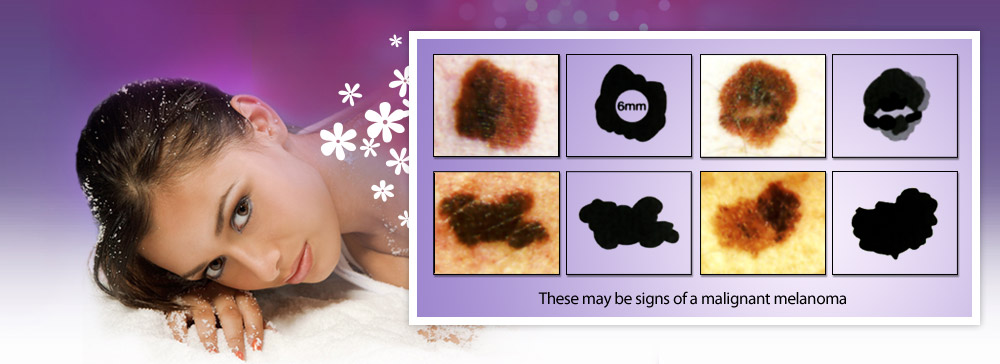
General Dermatology / Moles
Dysplastic Nevus
What is a dysplastic nevus?
A dysplastic nevus is an atypical mole; a mole whose appearance is different from that of common moles.
What do dysplastic nevi look like?
These moles may be unusual-looking on exam, as they may show:
- Asymmetry : a line drawn through the middle would not create matching halves
- Border : irregular or poorly defined edges
- Color : variation with shades of tan, brown, dark brown, or black, or a mix of colors
- Diameter : often but not always larger than 6 mm
- Evolution : change in any way
How common are dysplastic nevi?
About one out of every ten people has at least one unusual (or atypical) mole that looks different from an ordinary mole.
What is the significance of dysplastic nevi?
Doctors believe that dysplastic nevi are more likely than ordinary moles to develop into a type of skin cancer called melanoma. Because of this, moles should be checked regularly by a medical provider, especially if they look unusual, bleed, or change in color, shape or size.
The exact risk of an individual mole developing into a melanoma is uncertain. Patients with numerous dysplastic nevi are at a higher risk of developing melanoma than those individuals with only a few. Thus routine skin checks are very important after being diagnosed with a dysplastic nevus. .
The exact risk of an individual mole developing into a melanoma is uncertain. Patients with numerous dysplastic nevi are at a higher risk of developing melanoma than those individuals with only a few. Thus routine skin checks are very important after being diagnosed with a dysplastic nevus. .
How are dysplastic nevi treated?
Surgical excision is the treatment of choice for dysplastic nevi.
What do I need to do after being diagnosed with a dysplastic nevus?
After the atypical mole is removed by the medical provider, there are several things you can do to care for your skin. Because sun exposure may modify the number, appearance, and the progression of some of these moles, patients are encouraged to avoid the sun and to routinely use a broad-spectrum sunscreen with a sun protection factor of 30 or greater.
if diagnosed with a dysplastic nevus, you should be routinely monitored and have a complete skin examination at least every 6 months. More frequent examinations may be indicated, if other risk factors for skin cancer exist.
Self skin exams should be done routinely to evaluate for any new or changing skin lesions.
if diagnosed with a dysplastic nevus, you should be routinely monitored and have a complete skin examination at least every 6 months. More frequent examinations may be indicated, if other risk factors for skin cancer exist.
Self skin exams should be done routinely to evaluate for any new or changing skin lesions.
What do I need to be concerned about when I do self skin exams?
Some dysplastic nevi display more serious warning signs of melanoma: itching, elevation, crusting, oozing, a bluish-black color, pain, bleeding, swelling and ulceration. If any of these warning signs appear on your own skin or that of a friend or family member, consult a dermatologist right away. It could be the first sign of skin cancer.




